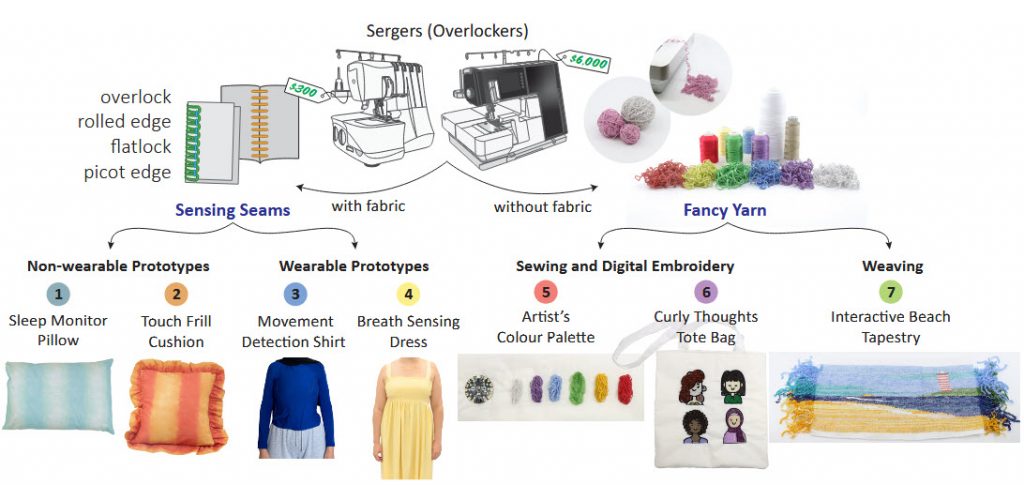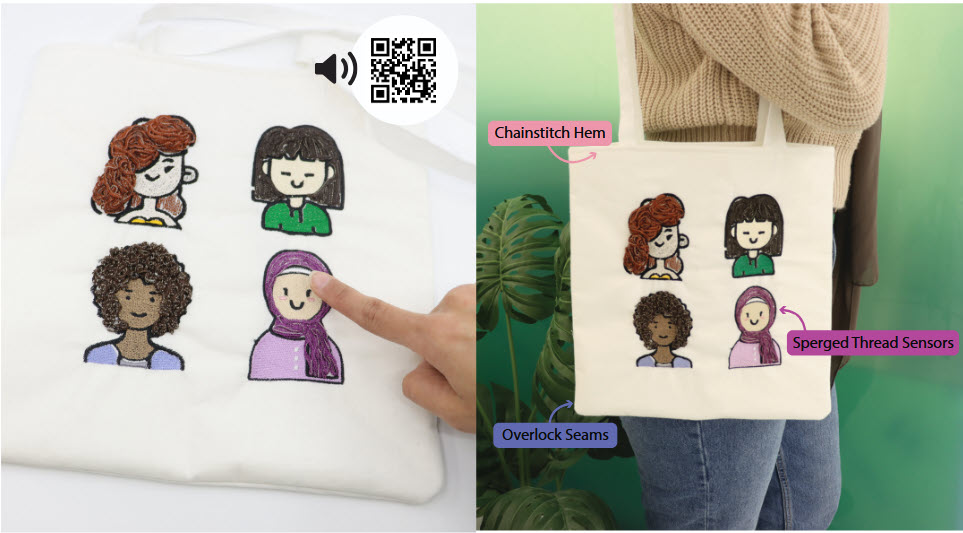Sergers, also known as overlockers, are common textile machines often found alongside sewing machines in homes and makerspaces. Despite this ubiquity, their application is underexplored in e-textile research. In this pictorial, we demonstrate the potential of sergers in seamlessly integrating interaction in garments and everyday home objects. After identifying the properties of various stitches and their utility for e-textiles, we demonstrate seven prototypes that implement our technique. Moreover, we present an innovative use for sergers to ‘interlace’ colorful conductive yarns that we call ‘sperged threads’. Using a research through design approach, we explore potential applications in several hybrid crafts, including e-textile sensors, garment making, weaving, sewing, and embroidery. Through this work, we aim to inspire researchers, and empower the maker community, to explore e-textile serging, or ‘e-serging’.
This research is published here: https://doi-org.proxy.queensu.ca/10.1145/3689050.3704428

Though there is some inital research into machine serged sensing sleeves [61], sergers can be involved in fabricating a broader range of interfaces. In this
pictorial, we employ a ‘Research through Design’ [16] approach to explore the use of sergers and their creative interactive applications, beyond their traditional usage, in e-textile design.

Curly Thoughts Tote Bag
Inspired by the naturally curly and textured appearance of sperged threads, the Curly Thoughts Tote Bag merges embroidery and textile art with storytelling. In this piece, embroidery and personal narratives fuse to create an interactive prototype. Each character embroidered on the tote symbolizes a unique story, resonating with the diverse experiences of the volunteers who voiced them. Conductive sperged threads are sewn and couched atop the digitally embroidered artwork, connecting to a Bare Conductive Touch Board concealed within the tote bag’s lining. We programmed the Touch Board to play MP3 files when the electrodes (characters) are touched. These audio files contain the voices of volunteers who felt drawn to a particular character, each sharing personal anecdotes and reflections in brief audio snippets. As one interacts with the tactile surface by touching the textured sperged threads, the corresponding character’s story is audibly unveiled, breathing life into the embroidered figures. Both the Curly Thoughts Tote Bag and the Artist’s Colour Palette are examples of the many ways conductive sperged threads can be utilized in e-textile arts.

Acknowledgement of Funding
This project was funded by the National Sciences and Engineering Research Council of Canada (NSERC) through a Discovery Grant (2021-04135) and the NSERC RTI (Research Tools and Instruments) Grant, as well as through a Queen’s University Research Initiation Grant (RIG). We acknowledge the support of Ontario Research Fund and Canadian Foundation for Innovation for this research.